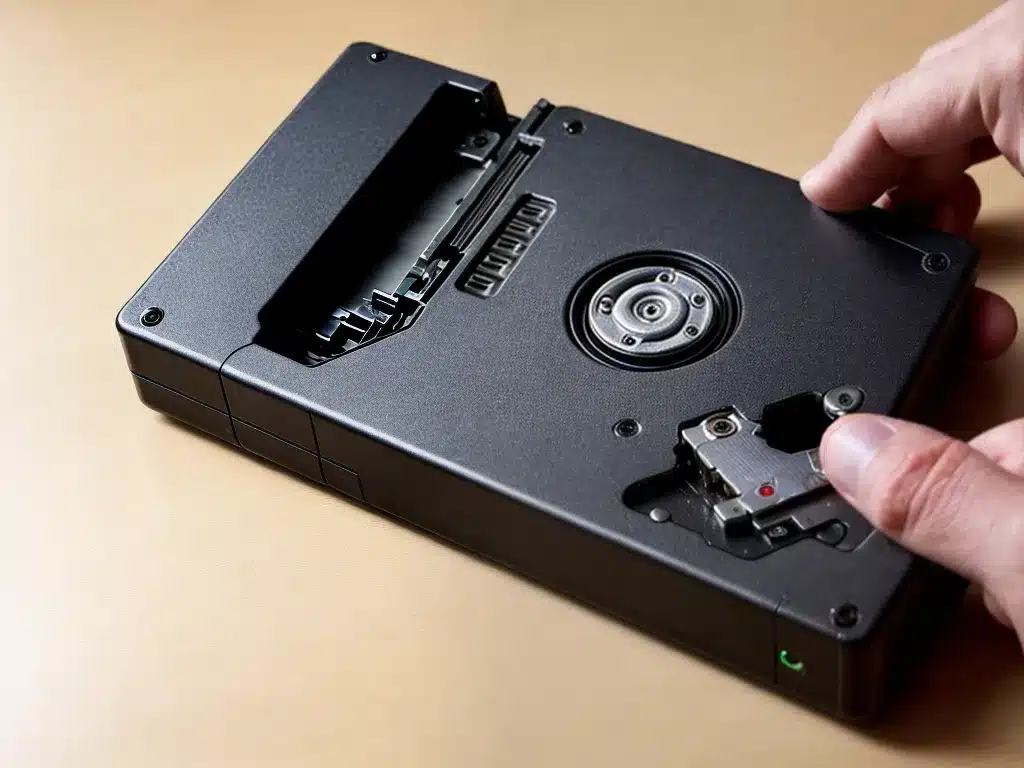Introduction
Connecting an external hard drive to your computer should be simple – just plug it in and it should show up. But sometimes, an external hard drive may not be detected even though it’s plugged in properly. This can be frustrating, but don’t worry – there are some troubleshooting steps you can try to get your external drive detected again.
I’ll walk you through some of the common issues that can prevent an external hard drive from being detected, along with solutions to fix them. With some basic checks and software updates, you should be able to get your external hard drive back up and running.
Check Power and Cable Connections
The first thing to check is whether your external hard drive is getting power and properly connected to your computer.
-
Make sure the drive’s power cable is securely plugged into the wall outlet. If it’s plugged into a power strip, try plugging it directly into the wall instead.
-
Check that the power brick LED light is on. If not, there may be an issue with the power supply. Try a different power cable if possible.
-
Verify the USB or external drive cable is firmly plugged into both the drive and computer. Try plugging it into a different USB port on your computer in case the original port is faulty.
-
Test the drive on another computer if possible. This will help determine if the drive itself is having an issue.
-
Check for any loose connections and listen for the drive powering on. You should hear the disk spin up after connecting.
Update or Reinstall Drivers
If your external drive is still not detected, outdated, missing, or corrupted drivers could be the issue.
-
Update your USB drivers. Outdated USB drivers can prevent external drives from functioning properly. Download the latest drivers from your manufacturer’s website.
-
Reinstall the external hard drive’s drivers. You can find these on the manufacturer’s website if available. This will reinstall fresh driver files for your specific drive.
-
Update your chipset drivers. Outdated chipset drivers can lead to peripheral devices not being detected. Keeping them updated will ensure maximum compatibility.
-
Update your Windows version. Older Windows versions may have driver issues. Updating to the latest version gets you the newest drivers.
-
Try connecting the external drive to a different USB port or computer if issues persist. This helps determine if the problem is with the drive or your computer’s USB ports.
Run First Aid and Diagnostics Tools
If drive connections seem fine, it’s a good idea to run through some diagnostics and repair tools:
-
Run CHKDSK in Windows to check for disk errors. Right-click the drive, select Properties > Tools > Check. Let the scan run – this can find and repair drive errors.
-
Use the drive manufacturer’s diagnostics software if available. Seagate, Western Digital and others have free software to test the drive health.
-
Check if the drive shows up in Disk Management. This can reveal if Windows detects the drive but hasn’t assigned a drive letter. You can assign a letter here.
-
Try third-party recovery software like Recuva or EaseUS. They can sometimes detect and access drives that aren’t visible in Windows File Explorer.
Format or Initialize the External Drive
If your drive is still not detected, even in disk management, a format or initialization may help:
-
Format the drive through Disk Management. Right-click the disk and select Format. Warning: This erases all data, but can fix partition and file system errors.
-
Initialize the disk through Disk Management. If the drive shows as Unallocated, you likely need to initialize it. Right-click and select Initialize Disk. Choose your disk and initialization method.
-
Use the manufacturer’s formatting tools. WD, Seagate etc. have free tools to completely format the external drive. This factory resets the drive.
-
Connect the drive to a Mac computer. Mac OS can sometimes detect and reformat hard drives that Windows fails to recognize. But this will erase Windows-based drives.
Try a Different USB Port, Cable or Computer
As mentioned earlier, trying different ports, cables and computers can help isolate the cause:
-
Connect the external drive to a different USB port on your computer. Test all available ports if possible in case one is damaged.
-
Try using a different USB cable between the drive and computer. Cables can sometimes fail or become loose over time and stop transferring data.
-
Connect the drive to a different computer running a different OS. For example, if you have a Windows issue, test on a Mac or Linux machine which uses different drivers.
If the drive fails on multiple ports, cables and computers, it likely indicates a hardware problem with the drive itself.
Conclusion
I hope these troubleshooting steps help you figure out what’s preventing your external hard drive from being detected. The key is to isolate if it’s a power, cable, driver or actual hardware failure issue. Checking connections, updating drivers, running diagnostics and trying different computers/cables should help identify the cause. If all else fails, contact the manufacturer for warranty support or hardware replacement options. Let me know if the external drive issue persists after trying these fixes!













